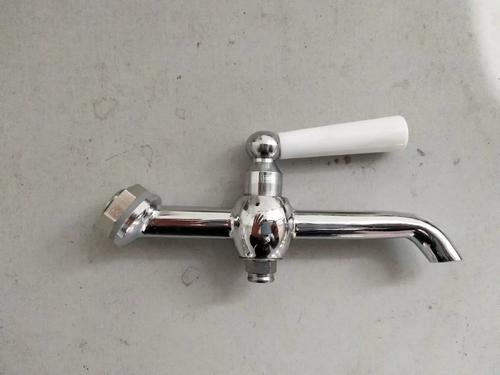Reviewing the Surface Treatment Process of Kaiping Stackless Steel Faucet
At present, the surface treatment of stainless steel failures mainly includes the following types: polishing, sandblasting, wire drawing, PVD, electroplating, and spraying

1. Polishing
The polishing of stainless steel faucet metal parts refers to the processing method of using mechanical effects to reduce the surface roughness of the workpiece, in order to maintain a bright and flat surface, mainly referring to mirror polishing Process flow: aggressive belt polishing, hem wheel polishing, cloth wheel polishing, ultrasonic cleaning Skill features: After passing through the pit size of the sand belt, from 100 to 1200 mesh, remove the skin (or use a grinding machine to achieve the corresponding appearance quality), then use a hemp wheel to organize the sand pattern, and use a cloth wheel to polish it to achieve a mirror like effect Advantages: It can achieve the appearance effect of water electrolysis Shortcomings: 1 High requirements for stainless steel forming materials 2. The surface hardness is not high, making it easy to cut the surface
2. Sandblasting
Sandblasting is a process that uses compressed air as the power to form a high speed spray beam to spray the sprayed material onto the surface of the workplace to be treated, causing changes in the appearance or shape of the outer surface of the workplace, and observing a degree of cleanliness and different routing Process flow: Non appearance parts: cleaning → sandblasting Appearance components: cleaning, sanding, sandblasting, cleaning Skill features: 1 Implement different reflective or matte effects 2. It can Tidy up the small bugs on the surface of the workplace and make it smooth, identifying the damage caused by bugs and improving the grade of the workplace 3. Cleaning the residue during pre treatment, improving the smoothness of the workplace, can make the workplace show a uniform and consistent metal color, making the appearance of the workplace more beautiful and beautiful
3. Wire drawing
Brushing is a surface treatment method that involves grinding products to form lines on the surface of the workpiece, achieving a decorative effect Recording to the different patterns after wire drawing, it can be divided into: straight wire drawing, ripple, spiral pattern, etc. Process flow: sand belt polishing, nylon wheel drawing Skill features: Brushing treatment can achieve a non mirror like metallic cluster on the metal surface, while also refining fine defects on the metal surface Mechanical wire drawing requires adjusting the speed of the motor to produce different wire drawing patterns
4. Electroplating
Electroplating is the process of plating a thin layer of other metals or alloys on the surface of ceramic metals using the principle of electronics It is the process of using electronics to attach a metal film to the surface of metals or other data products, there avoiding metal oxidation (such as rust), improving wear resistance, conductivity, reflection, corrosion resistance (such as copper sulfate), and enhancing beauty Process flow: aggressive belt polishing, linear soft cloth wheel polishing, hanging, grading and grading, water washing, pre cleaning, (acid copper plating), nickel plating, decoration layer plating (chromium, gold, etc.), water washing, drying, hanging down Skills and Features: Advantages: 1 High gloss coating, high quality metal appearance; Improve the hardness of stainless steel products 2. Compared to PVD, the price is low Shortcomings: 1 Poor environmental protection and high risk of environmental pollution
Article source: Kaiping stainless steel faucet http://www.kpjieyuan.com/
-
07-02
Stainless steel faucet manufacturer: How to prevent kitchen faucet leakage?
In our daily life, there are many items that may age after being used for a period of time During this time, leakage from the kitchen faucet is a common phenomenon If this problem occurs, how should w
-
02-20
Analysis of the development advancements of stainless steel faucet manufacturers
① - Simpler managementCompared to kitchen and bathroom equipment made of other materials, stainless steel faucets are more simple to clean and manage Stainless steel materials have stable functions an
-
01-15
The manufacturer of stainless steel faucets information how to determine their authenticity
Stainless steel raw materials are soft, while leading zinc alloy raw materials are hard and brightTake the thing to a spectroscopic instrument for chemical analysis (Most accurate) 2 Apply acid and al
-
01-08
How to handle the leakage of Kaiping stainless steel faucet better
1. To repair the leak of a stainless steel faucet, the first step is to turn off the main valve of the water pipe at home Prepare the screendriver and wrench2. There is no water leakage at the outlet
